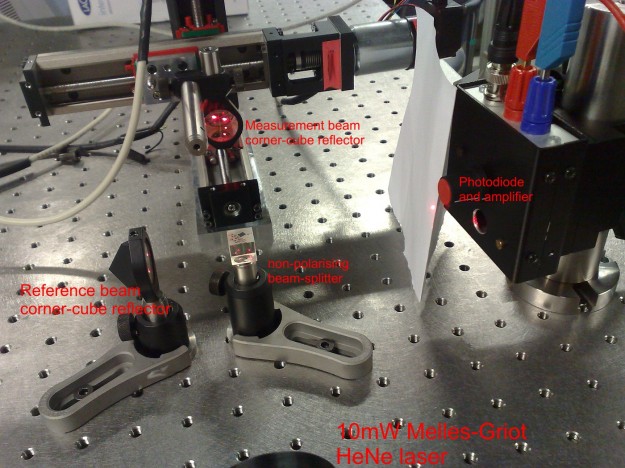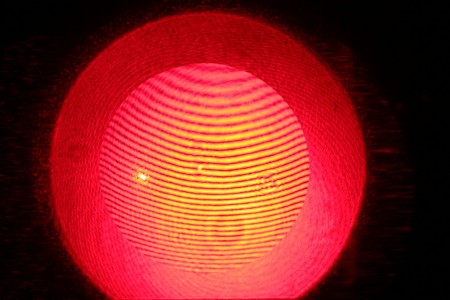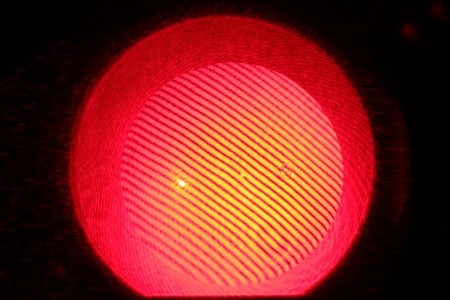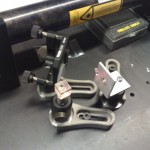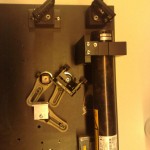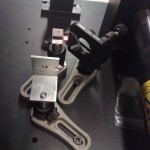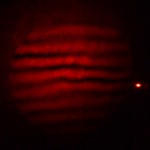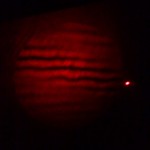Fringes from the University of Helsinki FTIR instrument, while aligning it using a HeNe laser. Imaged with af=600mm lens telescope and QHY5 USB-camera.
Tag: interferometer
Michelson interferometer
Tried this simple Michelson interferometer for measuring the error of a 100mm translation stage yesterday. The interferometer and stage are mounted to the same optical table, but there's still a fair amount of vibration of the measurement corner-cube which causes instability in the signal when the stage is not moving.
Some sample data here: interf_data. One channel is an encoder signal from the motor which should come every 5 um, the other channel is the interferometer output. Analysis will follow...
Interferograms
This is how the interferograms from the Bath interferometer look like. Using either fringe-tracing or Fourier transform-based analysis it is possible to calculate the shape of the mirror. The most popular analysis programs seem to be FringeXP and OpenFringe.
Bath Interferometer
Most interferometer types used for optical surface testing require an expensive reference element from which the reference beam is bounced off. The interferometer then compares the wavefront from the reference element to the wavefront from the surface being tested. The Bath interferometer is a clever design which uses the test-mirror for both the reference beam and the test-beam. It's very simple to build, requiring just a laser, a 50/50 beamsplitter, a mirror, and a short focal length lens to expand the beam.
Here's my first attempt at building one, and taking pictures of interferograms from the 240mm telescope mirror we are polishing. The video shows how unstable the fringes are with the interferometer on a normal (wobbly!) table and in a typical open room with lots of air-currents. Moving to a better table and protecting the beam-path from air-currents with cardboard boxes should make for more stable interferograms which can be quantitatively analysed.
